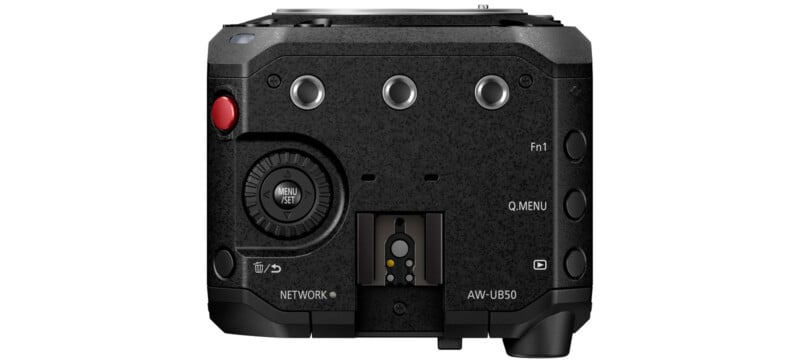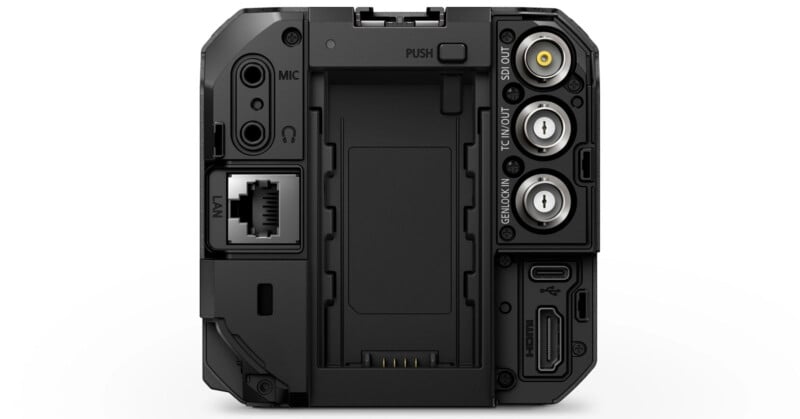![]()
Panasonic announced two new video-oriented “box” cameras. The Panasonic AW-UB10 and AW-UB50 models have different image sensor sizes and lens mounts, but both are compact and highly versatile for high-end video workflows.
Despite the significantly different model names, the new UB10 and UB50 are pretty similar to a pair of prior Panasonic box cameras, the BGH1 and BS1H. The similarities go beyond the form factor and design, as the new cameras also lack the phase-detect autofocus features that have arrived to numerous Panasonic Micro Four Thirds and full-frame cameras in the last couple of years, including the GH7, S5II(X), and S9 bodies.
The primary improvement with the new cameras is compatibility with Panasonic’s PTZ cameras, like the AW-UE160, AW-UE150, AW-UE80, and AW-UE50.

This compatibility is thanks to improved networking features and connectivity protocols. The UB10 and UB50 box cameras support a common IP protocol with Panasonic’s PTZ cameras and support NDI HX2.
Speaking of compatibility, the new cameras promise consistent color rendering with Panasonic’s AW-UE160 PTZ camera, ensuring the box cameras can fit in with a broader video workflow. This is especially important for the highly-riggable camera, as these cameras are often used as B or C cameras thanks to their flexibility. They can be mounted on gimbals, drones, and vehicles to capture distinct footage.

Modularity is the name of the game with Panasonic’s box cameras. By stripping down a video camera to its bare essentials, Panasonic keeps the size, weight, and cost down while ensuring filmmakers can cater the cameras to their needs.
The most significant differentiation between the two new models is their image sensors. The AW-UB10 features a 10.3-megapixel Micro Four Thirds MOS sensor paired with a Micro Four Thirds lens mount. The camera has Dual Native ISO, records 4K video, offers V-Log capture promising 13 stops of dynamic range, and has face/eye/body autofocus recognition.

The AB-UB50 has a 24.2-megapixel full-frame Live MOS image sensor, which supports V-Log capture like the smaller UB10 sensor. Thanks to the bigger sensor, the UB50 promises up to 14 stops of dynamic range. The UB50 also has Dual Native ISO and offers face, eye, and body autofocus recognition.
Both cameras have 3G-SDI and HDMI out, USB-C, PoE+ LAN, and include timecode I/O.

Pricing and Availability
Unfortunately, pricing information is not yet available for either camera. For reference, the BGH1, which has a Micro Four Thirds sensor, is $1,998. The full-frame Lumix BS1H is down to just under $2,500 with a $1,000 discount.
The new cameras are expected in early 2025 and should be available to order soon. B&H has product pages for each camera up: Panasonic AW-UB10 and AW-UB50.
Image credits: Panasonic
